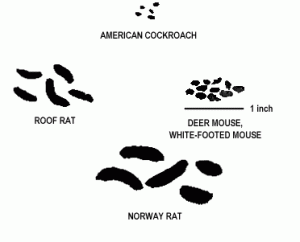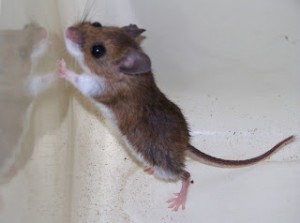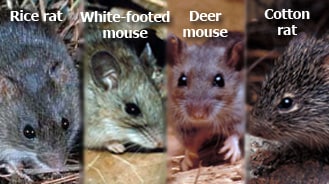Wild Animal Management MN | Mice, Deer Mice & Rodents
The deer mouse is one of the most familiar rodents found in North America. The deer mouse is about the size of a common house mouse. Their color ranges from pale gray to deep reddish brown. The tail is always sharply bicolored; it is white below and dark above.
Continued from Wild Animal Management MN | Deer Mice, Mice & Rodents Part 1
Habitat and Habits
This species is very adaptable and inhabits nearly every dry-land habitat within its range. They can be found in forests, grasslands, brushlands, agricultural fields and deserts.
Deer mice may appear cute and harmless, but they are known carriers of dangerous diseases such as Hantavirus. Hantavirus Pulmonary Syndrome is transmitted when urine and feces are disturbed. Extreme care should be employed when disposing of deer mouse droppings.
The droppings, saliva and urine of certain rodent species are known to transmit Hantavirus pulmonary syndrome (HPS). Disturbance of the droppings causes the virus to go airborne in a process known as aerosolization. Deer mice are the most common transmitters of HPS.
Only some kinds of mice and rats can give people hantaviruses that cause HPS. In North America, they are the deer mouse, the white-footed mouse, the rice rat, and the cotton rat. However, not every deer mouse, white-footed mouse, rice rat, or cotton rat carries a hantavirus. Other rodents, such as house mice, roof rats, and Norway rats, have never been known to give people HPS. Since it is hard to tell if a mouse or a rat carries a hantavirus, it is best to avoid all wild mice and rats and to safely clean up any rodent urine, droppings, or nests in your home.
Although transmission is rare, HPS can prove deadly if left untreated. Symptoms include tachycardia and tachypnoea. Cardiovascular shock may occur in severe cases. Rodent control is still considered the most effective prevention of HPS. Contact your local pest control professional to discuss extermination options.
Also, snake populations tend to be greater in areas rife with rodents. If you’re having an ongoing problem with snakes around your home, even getting into your home, your real problem might be rodents! The primary food of many snakes, especially the larger ones, is rodents (mice, voles, rats). When a property develops a healthy population of rodents, snakes can move in as well.
Worse, they spread disease to humans and other animals through their bite, by transporting fleas, lice, mites and ticks, and by leaving their droppings in food and other materials that humans contact. Rodents are vectors for bubonic plague, rat bite fever, leptospirosis, hantavirus, trichinosis, infectious jaundice, rat mite dermatitis, salmonellosis, pulmonary fever, and typhus. So, properly removing any animal droppings along with sanitation is absolutely necessary.
Note: Rodent Droppings
Deer mice, mice, or rodent droppings should be handled with utmost care. Particularly after they have dried, feces can be reservoirs of a variety of dangerous diseases and viruses. These dry droppings break apart upon contact and release airborne particles that may enter your nasal passages, causing infection.
Controlling Rodents
This short video, produced by Howard University’s CapComm Lab, the Earth Conservation Corps, and EPA, takes a humorous look at how conditions inside the home can provide food, water, and shelter where pests can thrive, and provides practical ways to prevent infestations.
Controlling rodents movie //www.epa.gov/pesticides/controlling/rodent.mov

Size of Deer Mouse and White-footed Mouse Droppings Compared with the Droppings of Other Household Pests – Close to Actual Size
Wildlife management experts, the same people who handle squirrels and raccoons, are often able to more expeditiously handle deer mice with their specialized knowledge of their specific behaviors and habits. In the pest control business, one must know thy enemy since the most effective protocols for removing a particular pest must be based on the behavior and biology of that pest. There is no one size fits all approach when especially it comes to getting rid of these little crafty rodents known for their cunning, stealth, and maneuverability.
If you suspect a mouse or deer mice infestation in your home, don’t wait. Call a professionals Minnesota Wild Animal Management Expert to come out and inspect your home. They can identify what type of rodents you may have, eliminate and sanitize any infestation, and take preventative steps to ensure your home is pest free as well repair any of the damage they may have caused.
Facts About Hantavirus
 “Facts About Hantavirus” Brochure
“Facts About Hantavirus” Brochure ![]() [PDF – 182 KB]
[PDF – 182 KB]
Source: Center for Disease Control & Prevention






